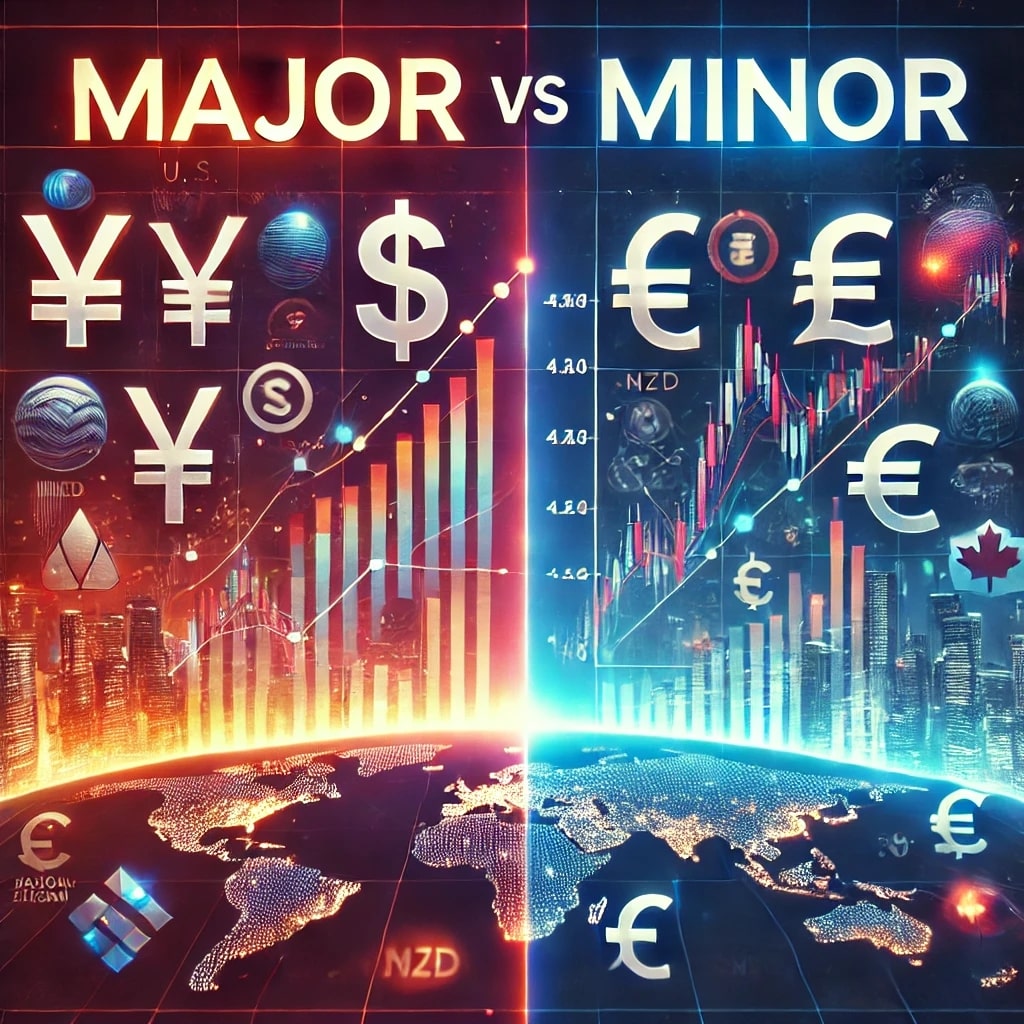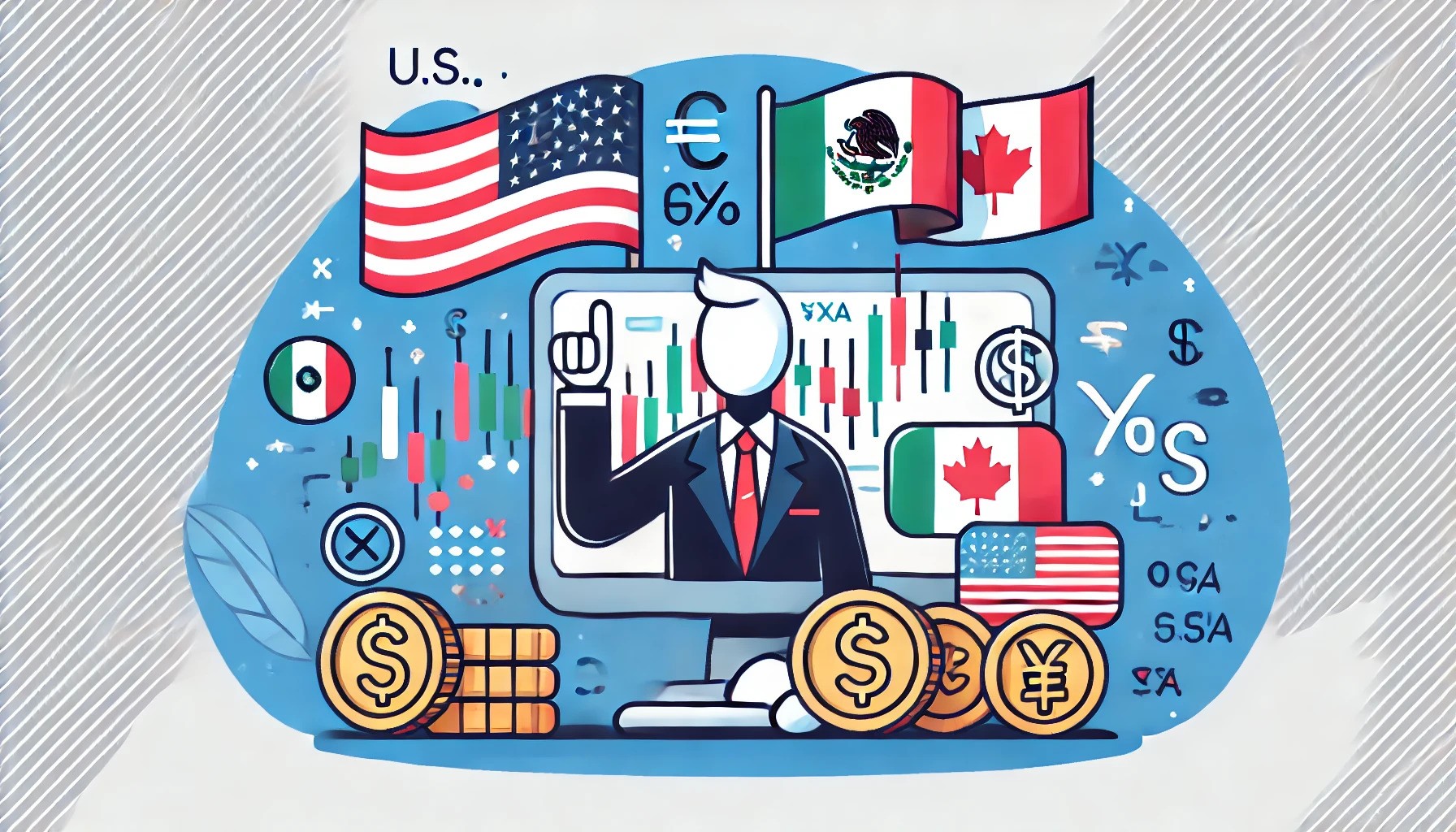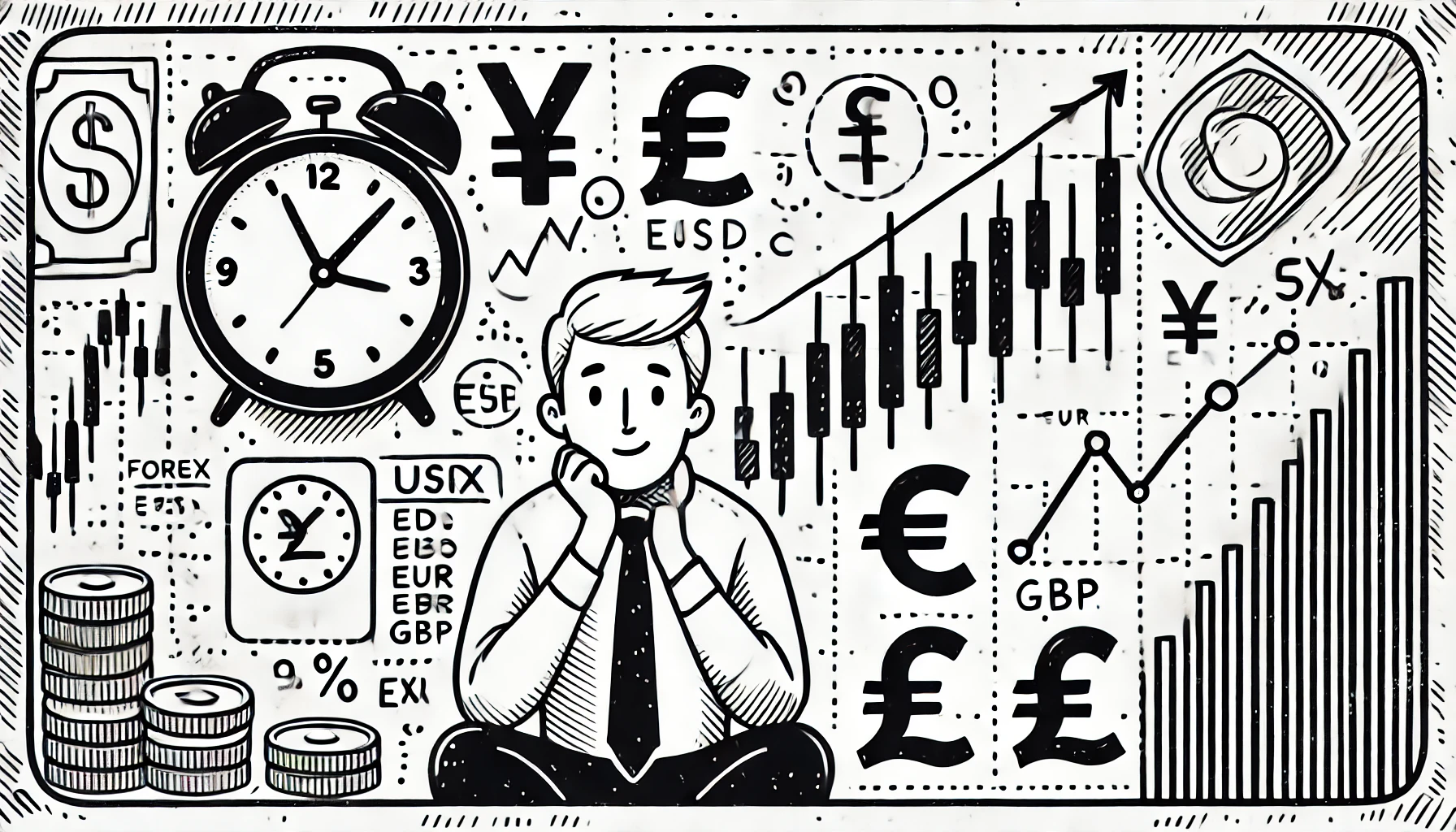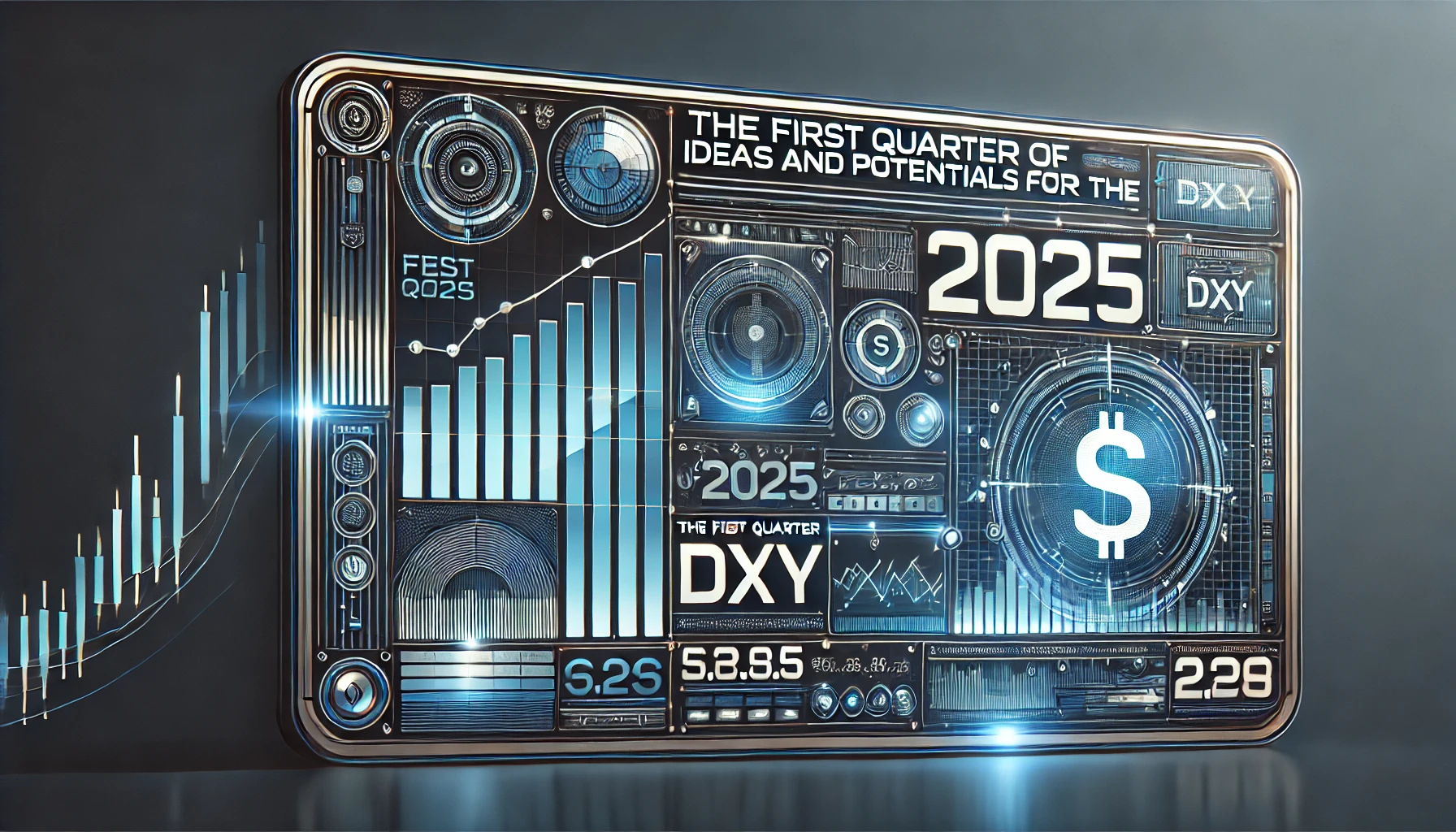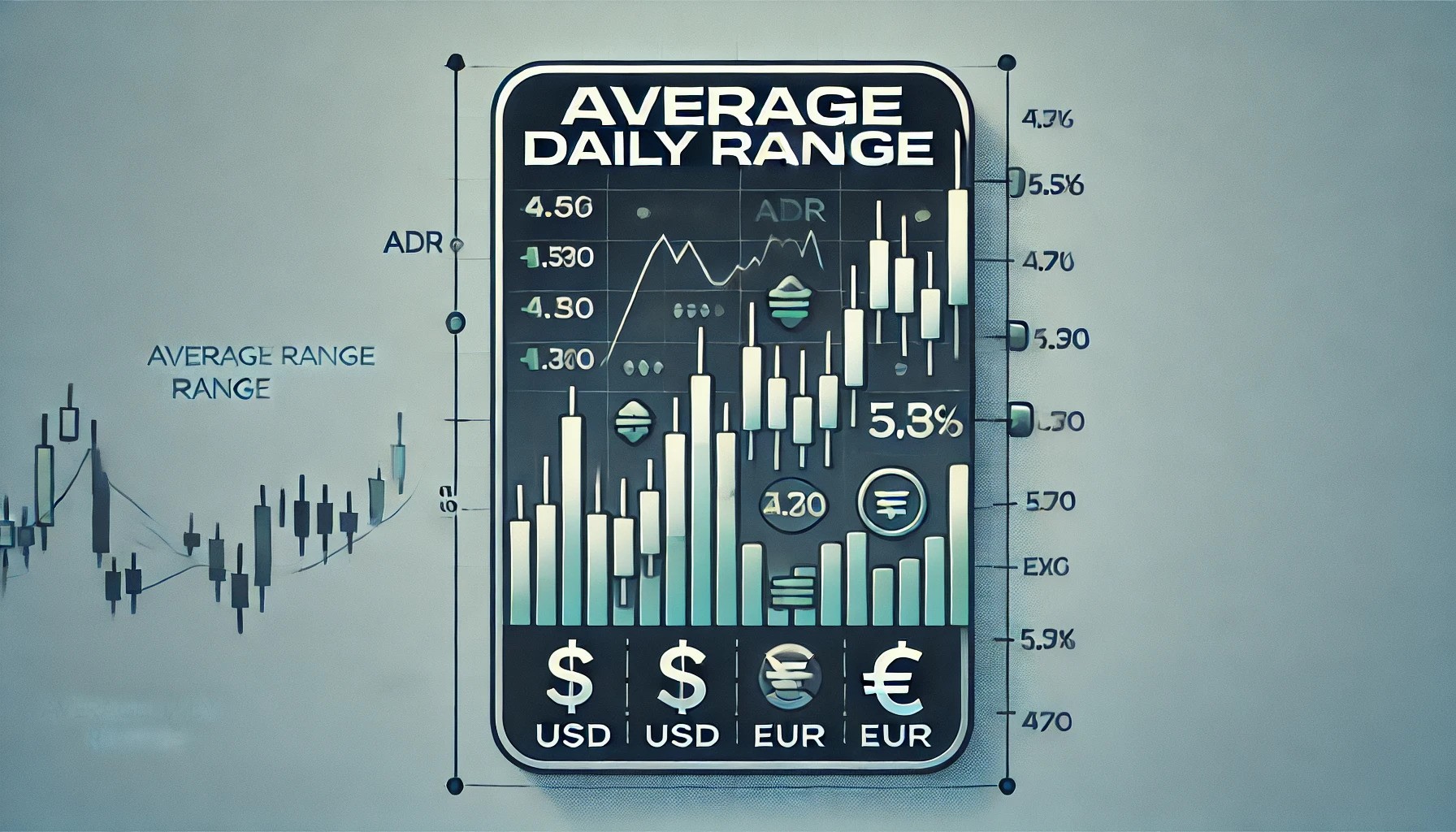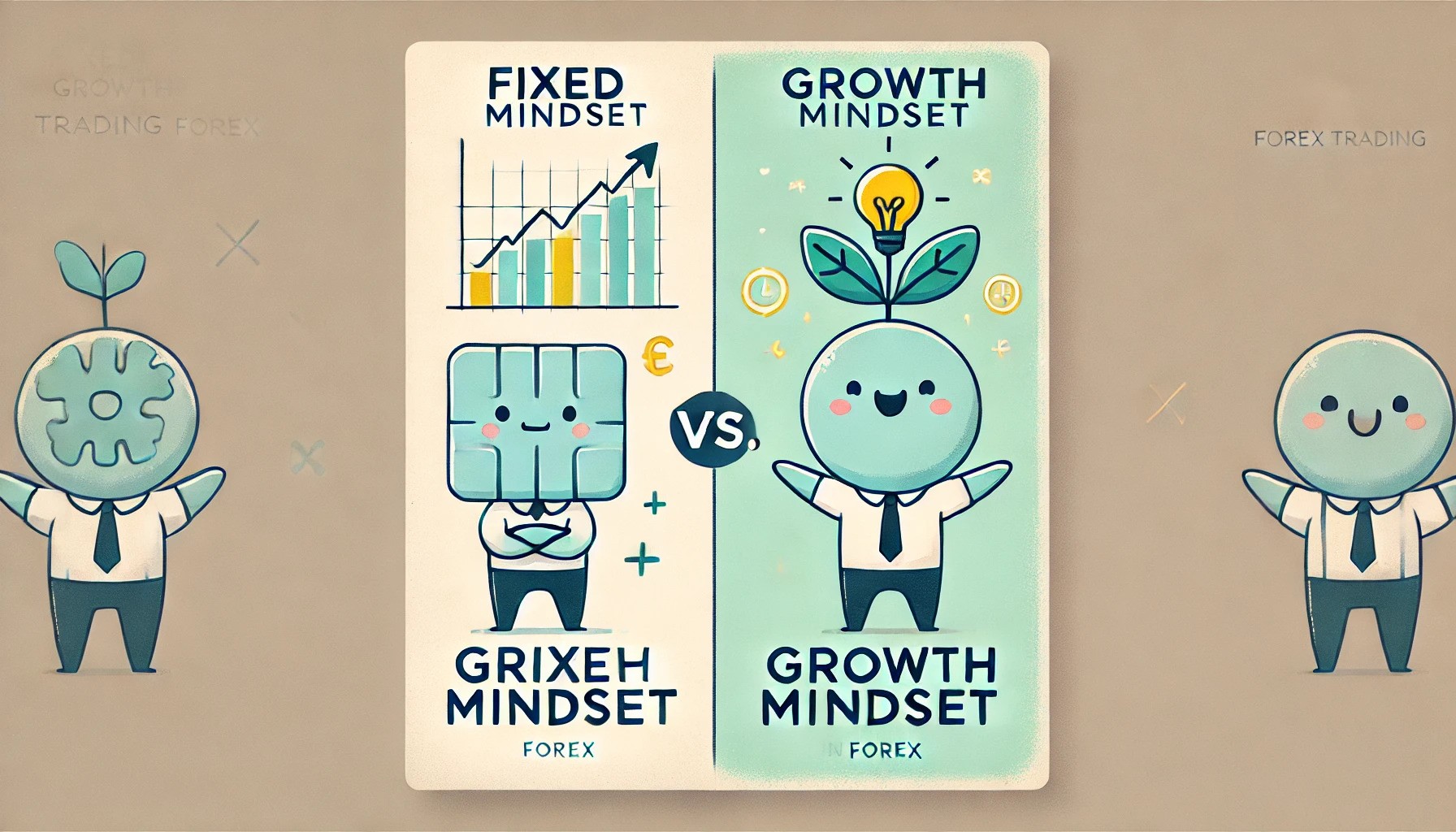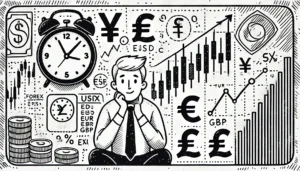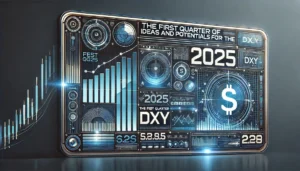In forex trading, currency pairs are classified into two main categories: major pairs and minor pairs. Understanding the distinction between these two types is essential for traders, as each type of pair has its own characteristics, benefits, and trading conditions. Let’s break down the key differences to give you a clear perspective.
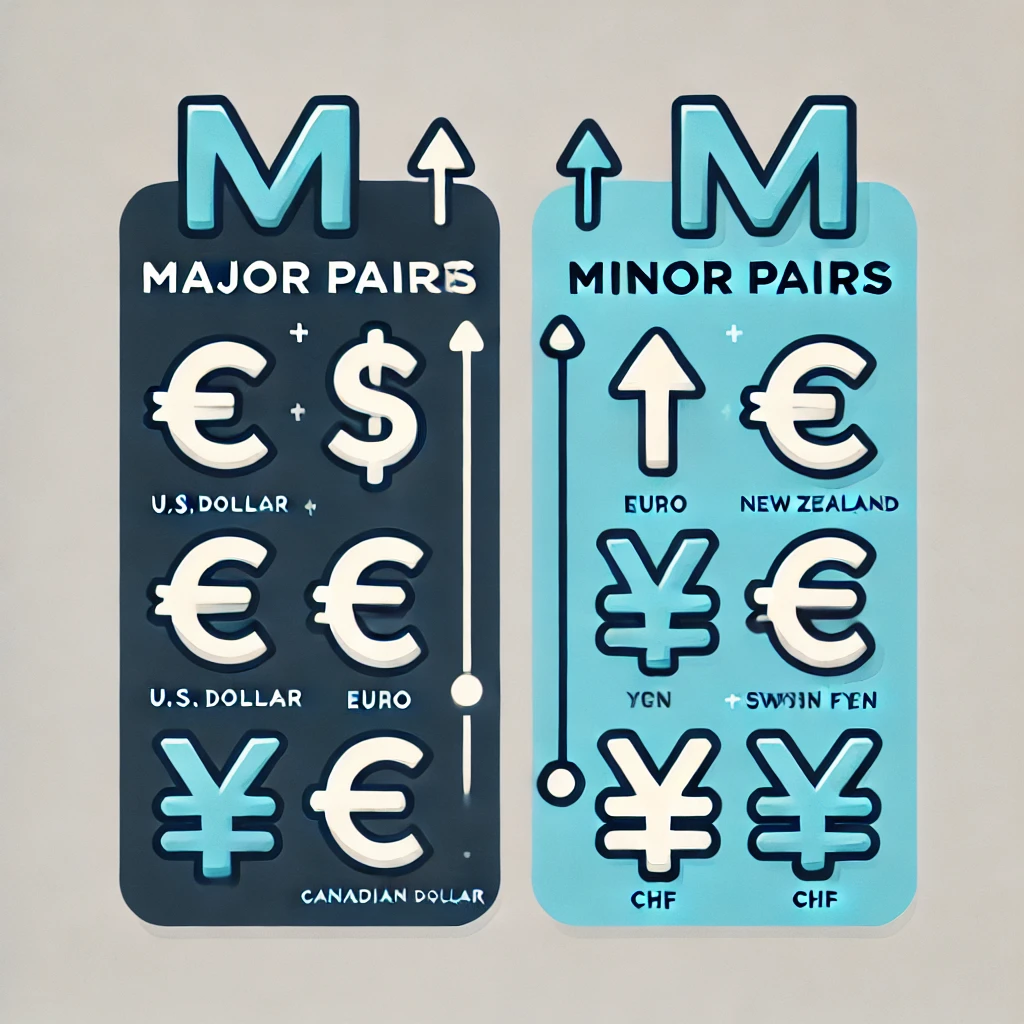
What are Major Pairs?
Major currency pairs involve the US dollar (USD) on one side of the pair, paired with another highly traded global currency. The major pairs are considered the most liquid and stable in the forex market, which makes them attractive to many traders. The major pairs are:
- EUR/USD (Euro/US Dollar)
- GBP/USD (British Pound/US Dollar)
- USD/JPY (US Dollar/Japanese Yen)
- USD/CHF (US Dollar/Swiss Franc)
- USD/CAD (US Dollar/Canadian Dollar)
- AUD/USD (Australian Dollar/US Dollar)
- NZD/USD (New Zealand Dollar/US Dollar)
These pairs are known for high trading volumes and tight spreads, meaning that transaction costs are generally lower. Due to their stability and liquidity, major pairs are often preferred by traders, particularly day traders and those using scalping strategies.
What are Minor Pairs?
On the other hand, minor currency pairs do not involve the US dollar but include other significant global currencies. Minors often consist of cross-currency pairs, meaning they involve two currencies from major economies but exclude the US dollar. Examples include:
- EUR/GBP (Euro/British Pound)
- EUR/JPY (Euro/Japanese Yen)
- GBP/JPY (British Pound/Japanese Yen)
- AUD/JPY (Australian Dollar/Japanese Yen)
- EUR/AUD (Euro/Australian Dollar)
Minor pairs tend to have less liquidity compared to the major pairs. This lower trading volume typically results in wider spreads, meaning it may cost more to trade these pairs. However, they can offer greater volatility and opportunities for larger price swings, which might appeal to more experienced traders looking for higher risk and reward potential.
Take control of your trading future
Supercharge your trading with our expert advisors. Start your journey today!
Key Differences Between Major and Minor Pairs
1. US Dollar Involvement:
– Major Pairs: Always involve the US dollar.
– Minor Pairs: Do not include the US dollar.
2. Liquidity:
– Major Pairs: Highly liquid due to the involvement of the US dollar and global demand.
– Minor Pairs: Less liquid since they exclude the US dollar and are traded less frequently.
3. Spreads
– Major Pairs: Have tighter spreads because of their higher liquidity and frequent trading.
– Minor Pairs: Generally have wider spreads due to lower liquidity.
4. Volatility:
– Major Pairs: Tend to be more stable with lower volatility.
– Minor Pairs: Can be more volatile, leading to potential opportunities for larger price movements.
5. Trading Costs:
– Major Pairs: Lower trading costs due to tighter spreads.
– Minor Pairs: Higher trading costs due to wider spreads.
Which Should You Trade?
Choosing between major and minor pairs depends on your trading strategy and risk tolerance. If you prefer stability and lower transaction costs, major pairs might be the best option. However, if you seek higher volatility and are willing to accept greater risk, minor pairs can offer more significant price movements and potential gains.
Conclusion
Understanding the difference between major and minor forex pairs is essential for crafting a successful trading strategy. While major pairs offer liquidity, stability, and lower spreads, minor pairs provide higher volatility and potential opportunities for larger price swings. Your choice of which to trade should depend on your experience, market knowledge, and risk appetite.
By mastering the differences, you can better navigate the forex market and tailor your trades to align with your financial goals.
Trump’s Tariffs on Mexico and Canada: How They Could Impact
Introduction Trade policies and tariffs play a significant role in shaping global economies, and their effects often ripple through financial markets,…
Delayed Gratification – The Power of Practicing It
Delayed gratification is the practice of resisting the temptation for an immediate reward in favor of a larger, more enduring…
DXY – The First Quarter of 2025: Ideas and Potentials
The U.S. Dollar Index (DXY) is one of the most critical indicators in global financial markets. It reflects the value…
What Does the Trump Presidency Mean for Forex Trading?
The Trump presidency, characterized by its unconventional policies and rhetoric, had profound implications for global financial markets. Forex trading, being…
Average Daily Range (ADR) in Forex Trading
The Average Daily Range (ADR) is one of the most popular metrics in Forex trading, offering traders valuable insights into…
Fixed vs. Growth Mindset in Forex Trading
Forex trading, often considered one of the most challenging financial markets, requires more than just technical analysis and market knowledge….
